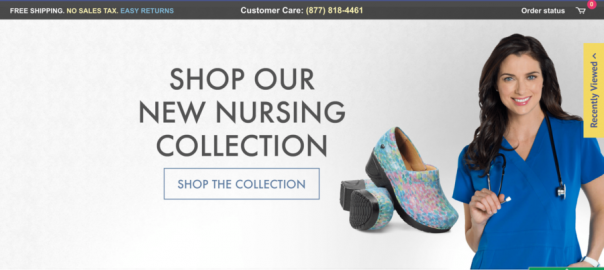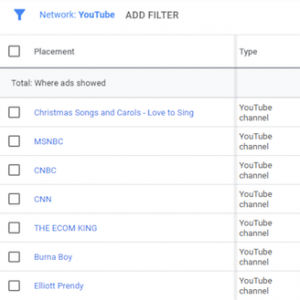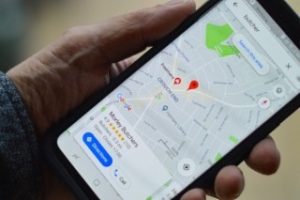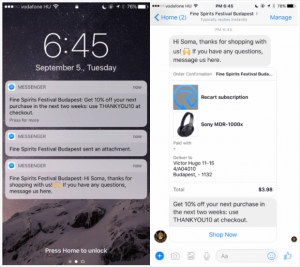— April 18, 2018

At Evergage, we often talk about the importance of leveraging machine learning to create individualized experiences for e-commerce shoppers. This type of one-to-one communication is incredibly important for the reality of today’s world where consumers expect personalized experiences, but the importance of using segmentation to deliver those personalized experiences in addition to machine learning isn’t going away anytime soon. There are many occasions when you need to group your website visitors, app users, email recipients, or customer base in different ways — specifically when it comes to sharing different content, messages or promotions with those audiences or analyzing the differences between groups. In this blog post, I want to share the seven must-have segments that every online retailer should be using for personalization and analysis.
Of course, every site is unique with its own products and customer base. And there is no “correct” number of segments an e-retailer should have at any time. But there are a few segments that are common to nearly every business that sells something online.
So keep in mind that there will be many, many more segments you will want to set up — many of them more narrow and focused than the ones I’ve listed here. But those will depend on the needs of your business. Ok, let’s get into some e-commerce segmentation!
1. First-Time Visitors
First and foremost, you want to be able to distinguish your visitors who have never been to the site from everyone who has been there before. As this group might be unfamiliar with your brand or how your site works, they may need specific messages or experiences aimed at educating them on the differentiators of your brand or your shipping and returns policies, assuring them they have landed in the correct place and why. In this example below, Rue La La explains to first-time visitors how its members-only boutique works.
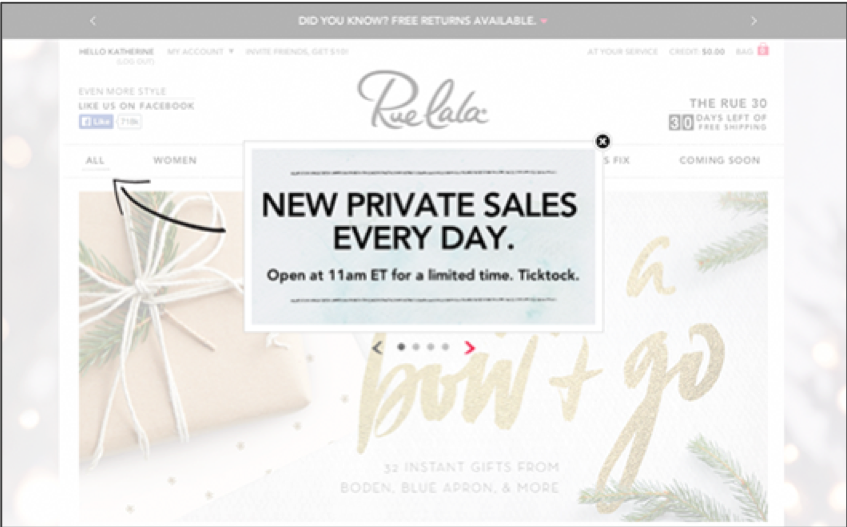
2. Returning Visitors Who Have Never Purchased
Another important segment is shoppers who have been to the site before but have never made a purchase. This group is already familiar with your brand, so they won’t need the introductory messages and experiences the first-time visitors receive. Instead, they can be reminded of products they were previously interested in, shown products that are new to the site since their last visit, and more.
It’s also a good idea to conduct some analysis on this segment. How does their behavior compare to returning visitors who have purchased before? What campaigns can you run to encourage this segment to convert?
3. Shoppers Who Have Purchased At Least Once in the Past
When you can identify someone who has purchased before, you are able to recognize your true customers. You want to avoid providing introductory messages to this group, because you don’t need to introduce yourself to them. You can instead suggest items that pair with products they have purchased in the past.
You can also look into how the behaviors of this group compare to that of a group of shoppers who have never purchased. What sources brought them to the site? Did they engage with any content that non-purchasers didn’t? This analysis can help you identify some campaigns to test to try to convert non-customers in the future.
4. Loyal Shoppers
Knowing who your loyal or high-value shoppers are is critical. With that information, you can send a targeted email with special discounts or early access just to them. You can ensure that the website incorporates plenty of personalized elements so loyal customers know that you recognize and appreciate them. You can also analyze the differences in behavior between these customers and those shoppers who have never purchased before to see if there is anything that can be learned about how to create more high-value customers.
We usually define loyalty as a combination of engagement and spend — meaning that in addition to spending relatively more than the average visitor, they also visit the site regularly and spend a lot of time shopping. But every company has a different customer base so it’s important to figure out what loyalty means for your business before you begin creating segments around a vague term.
5. Cart Abandoners
Sending cart abandonment emails is a common tactic for retailers. But if you are able to add shoppers to segments in real time (as a good personalization platform should allow you to do), you can show a message to shoppers who are attempting to leave the site, incorporating items from the cart and offering an incentive (such as in the image below).
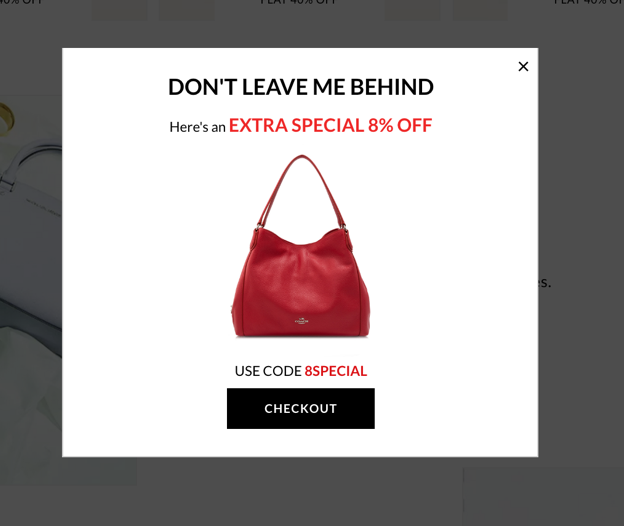
You can also analyze this segment to understand how cart abandoners differ from purchasers and see if you can glean anything that will help you convert more of them.
6. Shoppers Whose Favorite Category is X
Every retailer is familiar with product recommendations, which should be individualized so that each person sees products in their preferred categories, brands, colors, or any other relevant attribute. Those types of experiences are driven by machine-learning algorithms, so segmentation isn’t needed there. But there may be other times when you want to show promotions of a certain category only to visitors who care about that category. In those cases, you will want to have one segment or more that contains shoppers whose favorite category is X (depending on the categories you sell, of course).
“Favorite category” should be defined as the category in which the shopper has spent the most time within some timeframe (which should be determined by you and your team). You could, of course, determine someone’s favorite category based on clicks alone, but you would be missing out on shoppers’ true intent. A shopper can click on a product or category as many time as they like, but are they showing more engagement by spending the most time there? That’s the real question.
Once you’ve created this segment (or segments, more likely) you can tailor your homepage images and headlines to promote each visitor’s favorite category (such as nursing shoes, in the image below), or you can send emails that contain promotions for the category that is most relevant to each recipient.
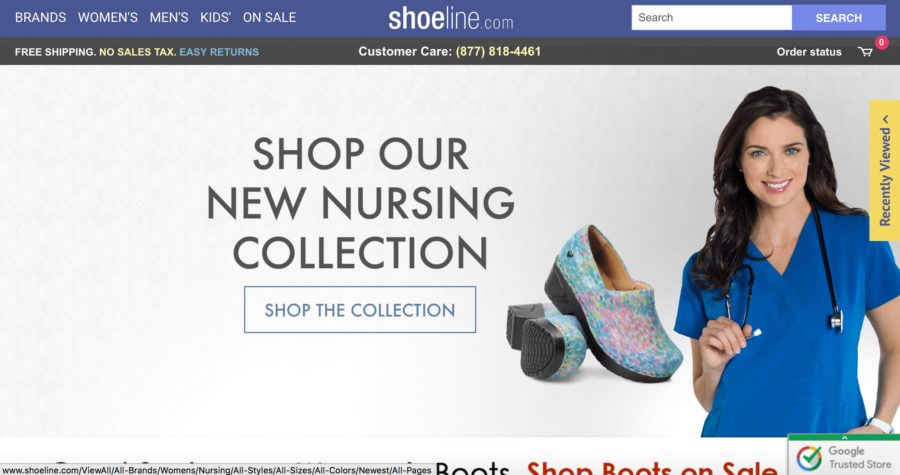
7. Location
Finally, location is often an important distinction for retailers. The way that you segment based on location will vary based on your business. You may want to have a segment of domestic shoppers and one of international shoppers. You may want a segment of West Coast US shoppers and one for East Coast US shoppers. You may even want to have a segment of shoppers from specific states or countries.
There are many reasons you may want to do this. You might want to remove any mention from your site of free shipping for international visitors if you only offer free domestic shipping. If you offer sports team merchandise, you may want to promote the right team for the right visitor based on the state they’re from. You might also want to analyze the differences between shoppers from different areas to uncover any regional preferences that exist to help your in-store merchandising.
Final Thoughts
As I mentioned in the beginning of this post, these are just the seven segments that are relevant to most retailers. There are many more segments that you can create that are more tailored to your needs. And you can combine various segments above to create even narrower segments — such as high-value shoppers from New York whose favorite category is footwear – to use for targeted personalization and analysis.
Digital & Social Articles on Business 2 Community
(46)
Report Post